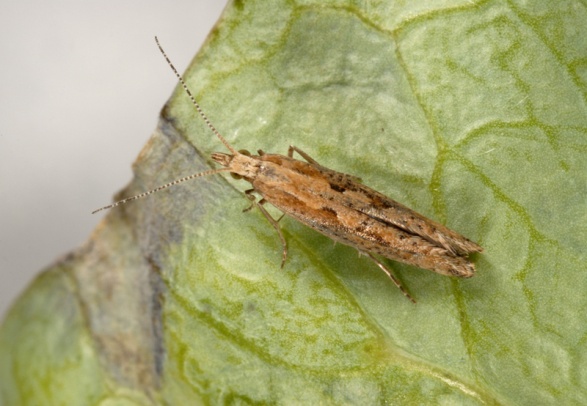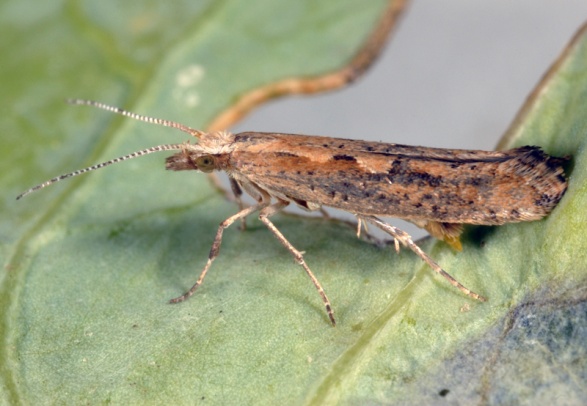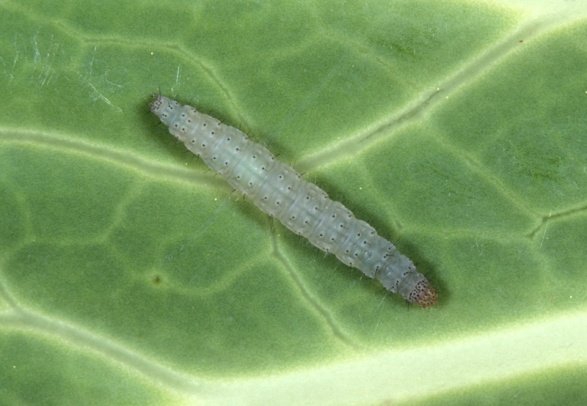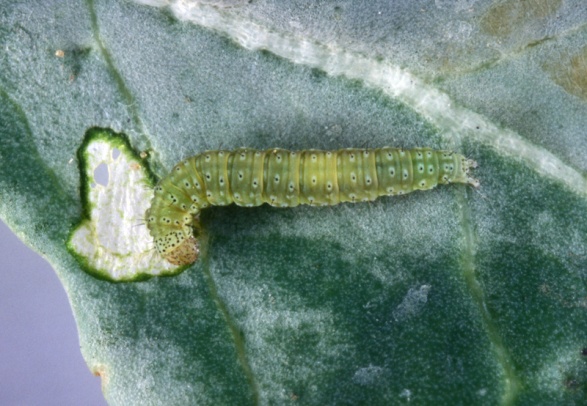
Diamondback moth
Plutella xylostella (Linnaeus)
(Insecta: Lepidoptera: Plutellidae)
Adults are 6 mm long, thin, grayish-brown moths. Their backs show a characteristic cream-colored or light brown band that often is constricted and has the shape of one or more diamonds. Larvae are small (fourth instar is 11.2 mm), tapered at both ends, and green with few short hairs.
The eggs usually are laid on foliage, and hatching larvae go through four instars. Pupation occurs inside a loose cocoon on the foliage. The complete life cycle takes on average 25 to 30 days, and in the southern United States, up to 12 generations per year may occur.
The diamondback moth is probably native to Europe. It first was detected in the United States in 1854 and has spread throughout the country.
Larvae of Plutella xylostella feed on foliage of virtually all vegetable crops in the family Cruciferae.
Images
To save the Web-optimized images shown below to your hard drive:
PC users: right click to "Save Picture (or Image) As..."
Mac users: click and drag to your desktop.

Dorsal view of adult diamondback moth, Plutella xylostella (Linnaeus)
(Photographer: Lyle Buss, University of Florida)

Lateral view of adult diamondback moth, Plutella xylostella (Linnaeus)
(Photographer: Lyle Buss, University of Florida)

Pupa of diamondback moth, Plutella xylostella (Linnaeus), within loose silk cocoon
(Photographer: Lyle Buss, University of Florida)

Dorsal view of larva of diamondback moth, Plutella xylostella (Linnaeus)
(Photographer: James Castner, University of Florida)

Fourth instar larva of diamondback moth, Plutella xylostella (Linnaeus), feeding on foliage
(Photographer: Lyle Buss, University of Florida)